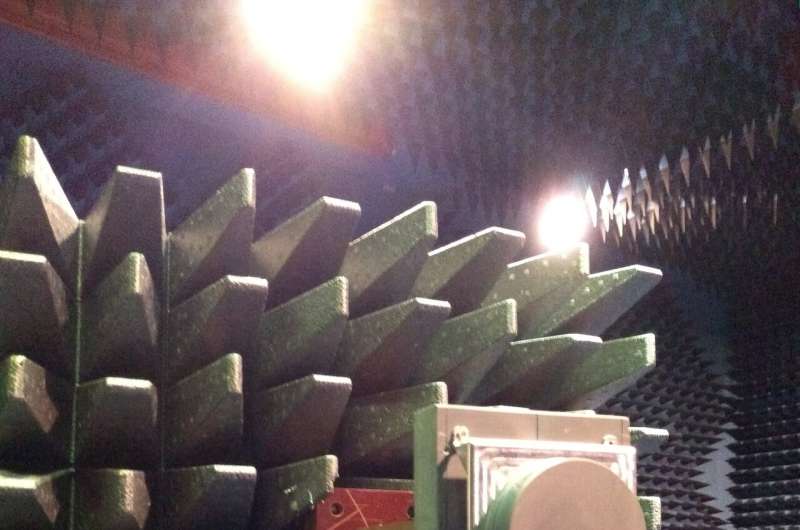Image: Anchor antenna

This patch antenna under test at ESA's technical heart is designed to maintain a radio link between the two satellites making up the Proba-3 mission, allowing the pair to fly in formation to maintain an artificial eclipse of the sun.
Aiming for launch in 2021, Proba-3 is ESA's – and the world's – first precision formation flying mission. A pair of satellites will fly together maintaining a fixed configuration as a 'large rigid structure' in space to prove formation flying technologies.
The mission will demonstrate formation flying in the context of a large-scale science experiment. The paired satellites will together form a 150-m long solar coronagraph to study the sun's faint corona closer to the solar rim than has ever before been achieved.
Inter-satellite links will be maintained using this radio antenna, which was developed along with its associated electronics by Tekever in Portugal.
The antenna is seen during testing at ESA's Compact Antenna Test Range, part of ESA's ESTEC technical centre in Noordwijk, the Netherlands. The CATR facilities allowed detailed analysis of the pattern of the signal emitting from the antenna.
Provided by European Space Agency




















